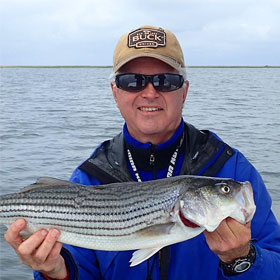Lake Ray Hubbard Fishing: Diverse, Year-Round, and Good
By Ken Schultz
Jun 05, 2018
Lake Ray Hubbard fishing entails working timber, bridge pilings, deepwater humps, docks, vegetation, brush, rip rap, and open water, depending on species.
With 22,745 acres of Lake Ray Hubbard fishing to enjoy, Dallas-area anglers have a lake-fishing jewel to explore in this manmade body of water. Check our fish species section to learn more about bass, crappie, sunfish, hybrid stripers, white bass, and catfish constitute diverse attractions, especially for families, and action can be enjoyed here year-round.
Since there’s so much water and a north-south span of 13 miles, you might wonder where to fish and where to find the best Lake Ray Hubbard fishing spots. Personnel at lakeside marinas and area bait and tackle shops are the best up-to-date sources, and local fishing maps help, since the answers vary with time of year and species, as is true of all fishing in Texas.
When this water-supply and hydropower impoundment was formed in 1968, all existing timber was flooded. Today, submerged timber is a primary place to locate Hubbard’s crappies, with large trees worth special consideration. Because numerous bridges span the lake, their pilings are also a key crappie attractor.


Largemouth bass (black bass) are a big draw in Texas, and likewise are a Lake Ray Hubbard fishing staple. Hubbard has been stocked with Florida-strain largemouths for three decades, so this large-growing fish is well established. There’s approximately 111 miles of shoreline to explore, making boat docks, stumps, brush, hydrilla, retaining walls, and rip rap significant Lake Ray Hubbard fishing spots. Bass also are caught away from the bank at times, notably in June and early July, chasing abundant and roving schools of gizzard and threadfin shad and providing exciting opportunities.
The main focal point of Lake Ray Hubbard fishing is often hybrid striped bass (“hybrids”). One of the craziest episodes of my fishing career involved deep jigging for hybrids on Hubbard, so I’m especially fond of the species at this reservoir. Hybrids feast on shad in open-water environs, so they’re sought on submerged humps and levees by casting and vertical jigging with heavy bodied (“slab”) spoons, and also caught when busting schools of surfacing shad in open water. White bass, also called sand bass locally, are often in the open-water mix as well.


Another prominent Hubbard species is blue catfish, whose population has especially prospered in recent years. These and channel catfish are primarily caught deep, on assorted live and dead baits, although some are landed by anglers jigging in deep water for other species.
The Texas Parks and Wildlife Fishing Report provides info on current Lake Ray Hubbard fishing. Get your TX fishing license online today.









